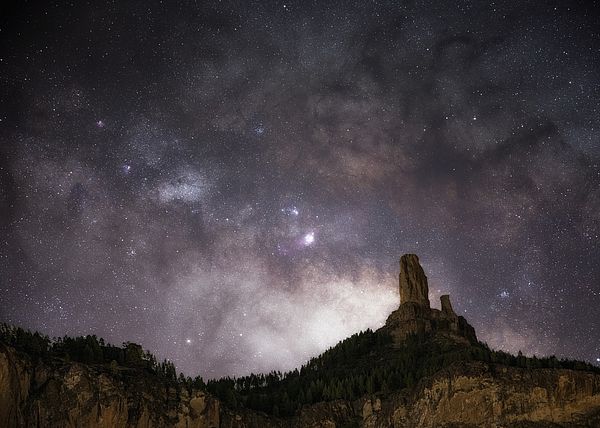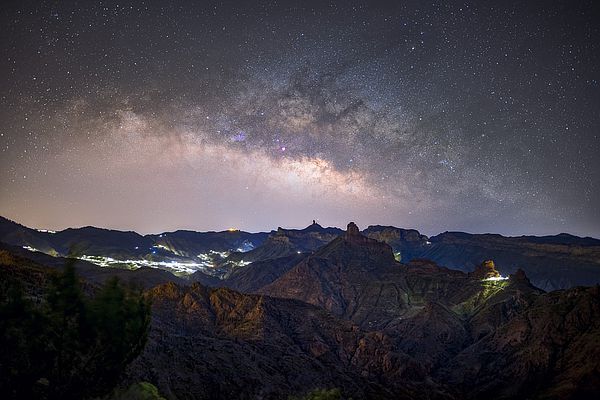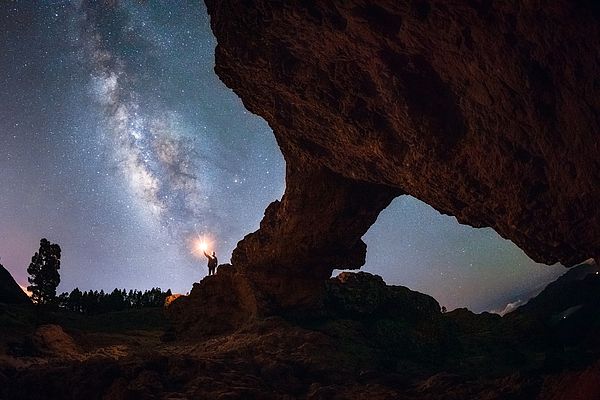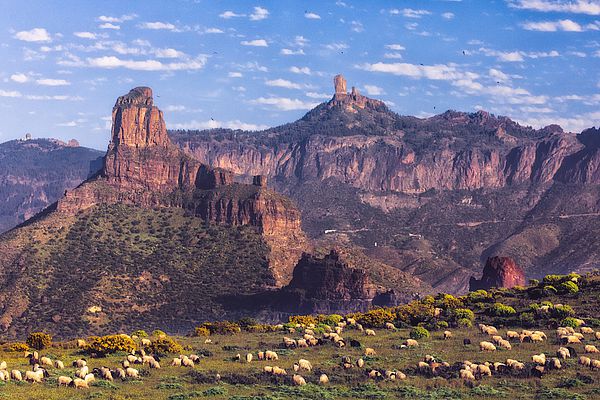There’s a wide open window to the skies in Gran Canaria, which has been around for generations, since the time of the first settlers.
The island’s pre Hispanic society had several sites from which the aboriginals took time to study the sky, around which their domestic and religious life revolved. We now know that the Ancient Canarians knew a great deal about the sky and its cycles.

We have learned that they used to keep time based on their study of the position of the stars, while there are chronicles that refer to festivals related to the positioning of the sun, moon and some stars.
This legacy can be traced to the primitive observation sites spread around the island, for instance the one at Risco Caído, in Artenara. This is an enclave located on the left hand side of Barranco Hondo, splitting the municipalities of Gáldar and Artenara. In one of its caves a strange phenomena occurs in one strange and enigmatic moment. Sun rays filter through a space in the roof of the cave, and suddenly illuminates the whole of the inside, revealing the decorations in it. There are triangles sketched on the stone which are hit by the sun’s rays, and would appear to be linked to worship and fertility, and highlight the magical aura that this special site held for the ancient Canarians.

This phenomenon is also related to the farming calendar from aboriginal times. Due to its singular characteristics, Risco Caído is considered to be one of the most spectacular cave settlements on the island. It has been brought to the attention of all sorts of travelers, including scientists and journalists.
One of the highlights of the route around the numerous settlements with astronomical connotations in Gran Canaria, is the Necropolis of Arteara, where a burial mound, called El Rey by the local inhabitants, is lit up by the sun every year just for one day, coinciding with the solstice. It may well be that the necropolis was either built on a site illuminated by the solstice, or, once it had been built, the tomb was placed in the most appropriate place.

We find a similar case to this at the Roque de Bentayga, during the equinox, when the sun shines directly on a petroglyph symbol dug out of stone.
Another case would be at Cuatro Puertas, an emblematic site in Telde, with one of the strangest of phenomena to occur. Just once a year, at the summer solstice, sunlight floods into the cave during the evening, through the circles that make up the cave doors, and its light reflects right onto a perfectly shaped hole scraped out of the stone there. The cave was used for star worship.

A really magical moment is also provided by the moon which sits between the Roque Nublo and La Rana (the frog shaped rock next to it), a phenomenon which only occurs once every 18 years and which can only be seen fully from the centre of the seating area at the Almogarén del Bentayga, in Tejeda. From the sacred “almogarén” site itself, every year between 21st and 22nd March, we can witness the Winter equinox, between the two peaks that separate the mountains of Pico Las Nieves.
As we go around all these places, and see the aboriginal constructions and their symbols, we simply have to admire the laborious observation work the first inhabitants of the island must have put in, without all the modern technology available today.
How about joining hiking with star gazing?
Discover the skies of Gran Canaria with Astroeduca.
Would you like to learn all about a sky full of stars?
At the AstroGC tour company we take you on excursions from your hotel, and show you the spectacular starry skies over the mountains to the south of the island.